BEO Moussala – Towards "Global Change – Mountain Environment" Interrelations
The Challenge of International Research Agenda
Content
1. Basic Environmental
Observatory (BEO) – Moussala History
BEO Moussala was created at the end of 1999 by reconstruction
of the old Cosmic Ray Laboratory of the Institute for Nuclear Research
and Nuclear Energy - Bulgarian Academy of Sciences, constructed in
1959 and burnt in 1984.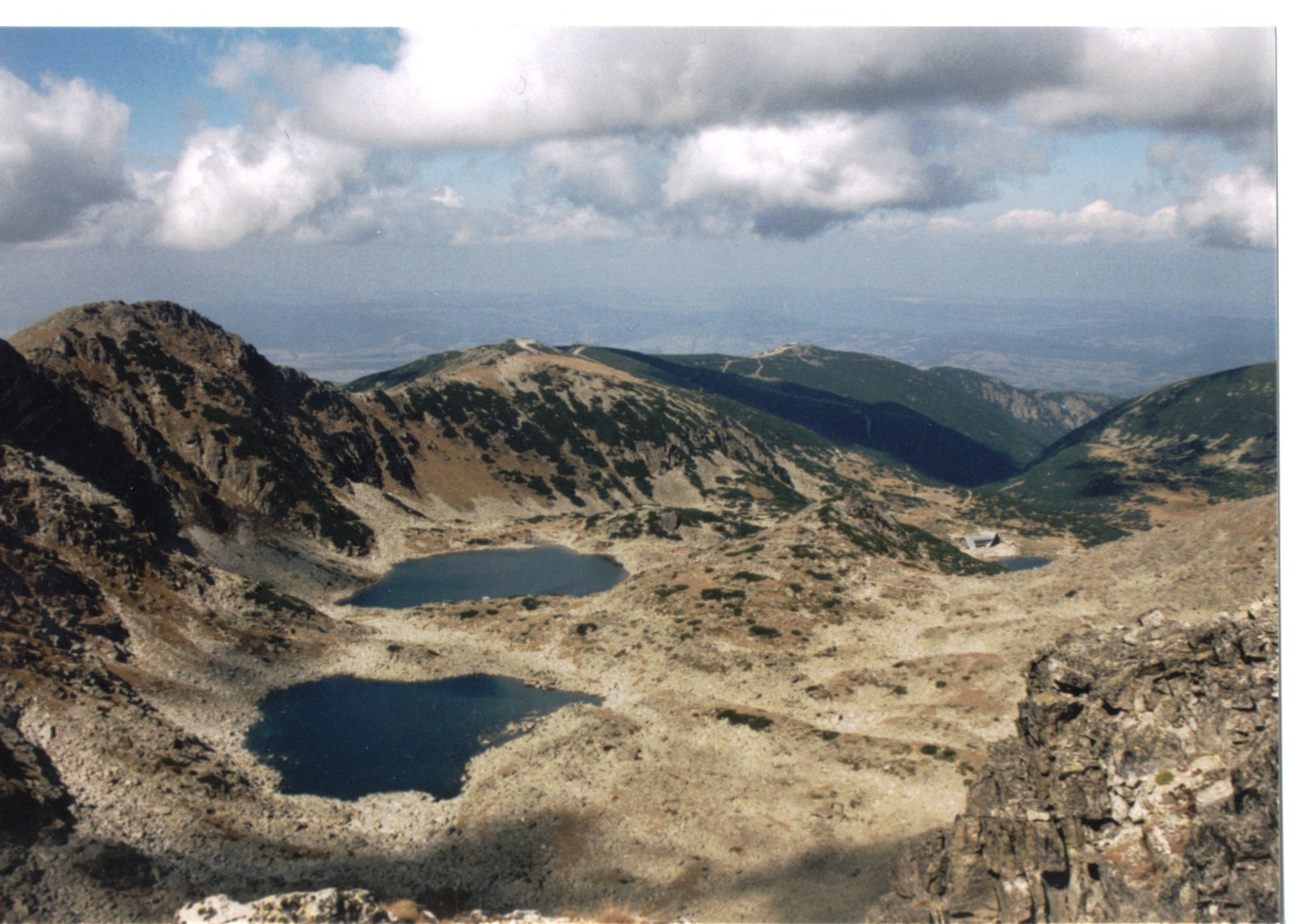
2. Location
Site characteristics: altitude: peak Moussala, 2925 m, Rila
Mountain - the highest peak at the Balkans; geographical co-ordinates:
25°35¢E, 42°11¢N; mean temperature (annual): - 3.1 °C;
temperature min: - 31 °C; temperature max: + 18.7 °C; precipitation
(annual): 1300 mm; snow period: 8 months; wind velocity: 70 m/s; mean number
of sunny days: 150 with large annual fluctuation; BEO is situated at the
peak Moussala: in the middle of the Central Reserve of the Rila Mountain;
mean annual number of visitors at the peak: more than 50000.
The BEO Moussala is located to the south of the Borovetz
resort in the Samokov municipality. BEO is accessible by bus (car) from
Sofia – 1 1/2h to Borovetz, then 30m by lift and finally 3 1/2 to 5h walking,
depending on season.
The "Rila" National Park was proclaimed in 1992. It spreads
on area of about 108000 ha.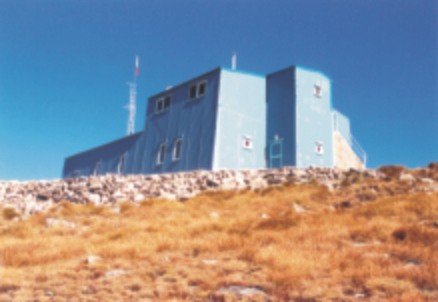
The specific geographic location, the vigorous geotectonic
dynamics, the big paleogeographic changes in the past, the significant
altitudes of the main ridge and the massive form of the Rila Mountain,
the geological composition with predominating water impermeable silicate
rocks and the corresponding soil cover, the clearly expressed global climatic
differences at the place of opposed sub-Mediterranean and continental influence,
the abundant surface flowing water making the mountain one of the richest
in water mountains on the Balkan Peninsula - all these determine the extreme
complexity and mosaic-like distribution of the animal and plant representatives
and their communities, as well as the high degree of the present relict
and endemic species that makes the Rila Mountain one of the most ancient
and most important centres of species and ecosystem variety.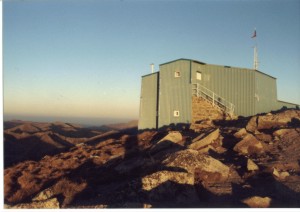
The great concentration of cultural and historic monuments
in the settlements, the orientation of local production towards natural
resources, the impressive treasures of the forest fund, pastures, medicinal
and fragrant herbs and fruits, the remarkable natural conditions for the
development of tourism - especially of winter hiking and skiing and the
modern forms of the eco- and rural tourism, are the main attributes of
the future development of the region.
The Rila Mountain is an object of intensive tourism and sports
and is a source of drinking water for about 1/4 of the population of the
country. The region of the Moussala peak is unique as:
-
a zone with concentrated extreme acting ecological factors - temperature,
etc.
-
a zone situated at the place of the "boundary" effect between the Central
European and Mediterranean influence
-
a zone with a high degree of adaptivity of local population - stable ecological
models
-
a zone with a specific form of creation processes - especially important
for revealing the "stress" effect from antropogenic pollution
-
a zone for studies on high mountainous vertebrate species
3. Facilities
BEO Moussala
BEO occupies 196.7 m2 with total area of 282 m2, and a volume
of 970 m3. BEO consists of a main building containing living rooms for
the basic staff (3 specialists) and temporary accommodation of about 15
expedition members, a kitchen, a dining room, storage area, visitor centre
(24 m2) and three laboratories (40 m2), possibilities for detector with
total effective area 120m2. BEO manages the basic technical infrastructure
at the peak: the cargo lift, the drinking water supply system from the
Ledeno Lake (pipes, pumps, etc.), the waste treatment facility and the
energy supply system (cable supply and electric diesel generator).
Monitoring station (MS) at the Alinitza valley environmental
reference point
MS Alinitza is situated in the Central Rila Reserve near
the Levi Iskar River valley: altitude 1750 m, geographical co-ordinates
23°34'E and 42°08'N. It occupies an area of 20 m2 (total area 40m2)
with short time accommodation possibility for maximum 10 people.
4. Research
4.1. Basic
results (OM2 and other previous and current projects)
MAIN RESULTS
1. Implementation of a detection system for complex monitoring
that will be connected in the near future to a telecommunication system
2. Implementation of the infrastructure of the complex monitoring
via renovation and modernization of existing structures
3. Complex monitoring of the environment in the Rila Mountain
4. Extensive database and geographical information system
on the environment in the Rila Mountain
5. Integrated system for mountain monitoring and management
6. Development of approaches to, techniques, equipment and
models for:
-
environmental measurements and observations
-
investigating the processes and structures in the ecosystems
-
managing the development, restoration and preservation of the mountain
environment
7. Updating the scientific level via participation in an
interdisciplinary project towards sustainable development of the socio-economic
and ecological systems
8. Multivolume series OM2 "High Mountain Observatory Moussala"
9. OM2 International Symposium "Observation of Mountain Environment
in Europe" - Borovetz’97, as well as two summer universities (Sofia - Melnik
1993, Semkovo 1998)
10. Scientific research popularization and educational activities
11. International political effect resulting from the creation
of favourable ambience for a constructive approach to solving of trans-boundary
regional problems in cooperation with teams from different European countries.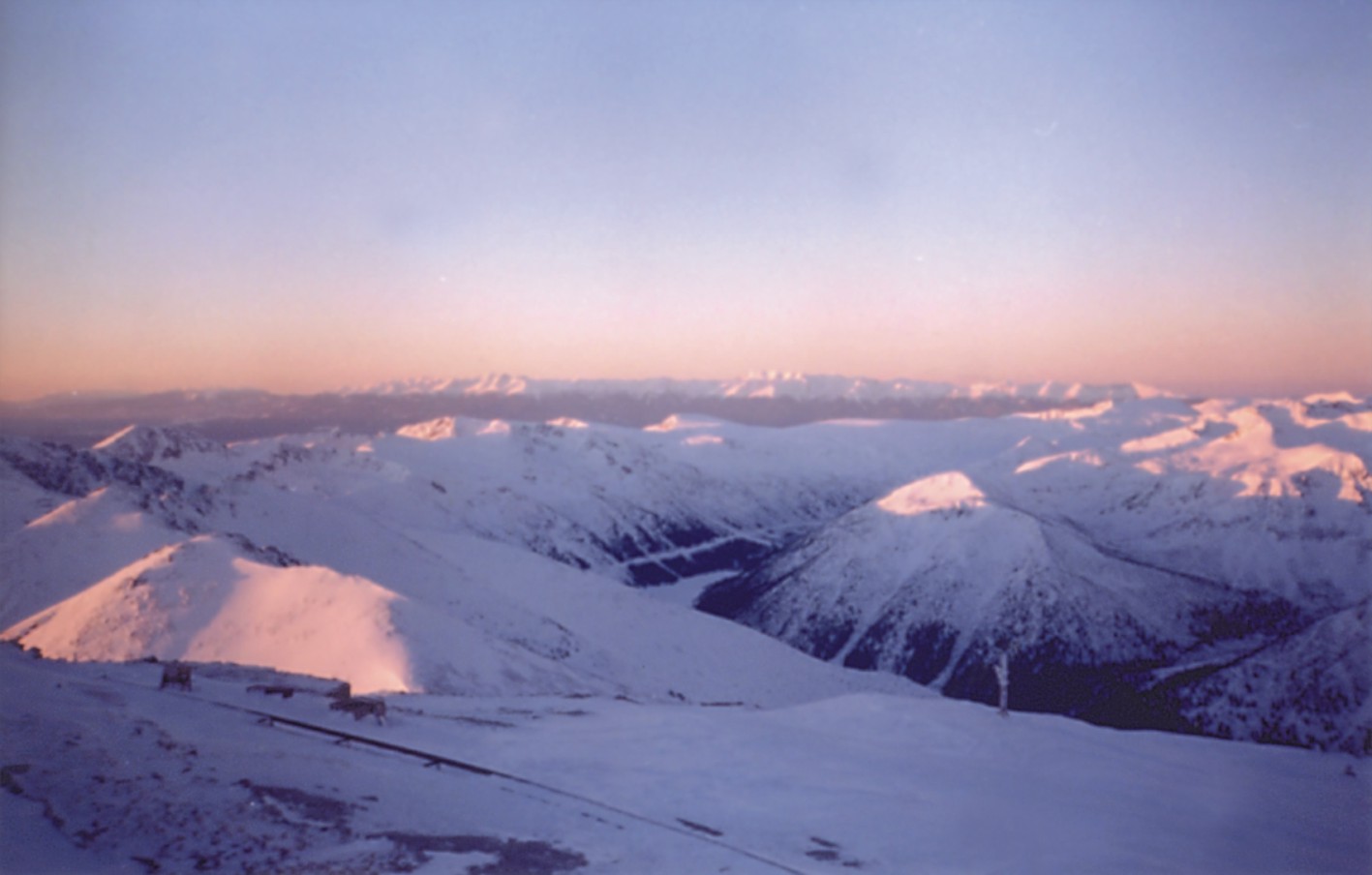
MAIN ACHIEVEMENTS
1. OM2 project - an example of bilateral scientific co-operation
at the Third Ministerial Conference "Environment for Europe" Sofia’95
2. Basic environmental observatory "Moussala"- in governmental
convention between France and Bulgaria
3. NZ422 project "Monitoring and Management of High Mountain
Ecosystems" was awarded by the National Science Foundation as the best
project
4. BEO Moussala and OM2 Project are presenting at EXPO 2000
in Hanover at the Bulgarian exposition – Live in Nature.
5. The Basic Environmental Observatory (BEO) was constructed
on the Moussala peak, 2925 m a.s.l. with the financial support of the National
Fund for Environment Protection of the Bulgarian Ministry of Environment
and Water.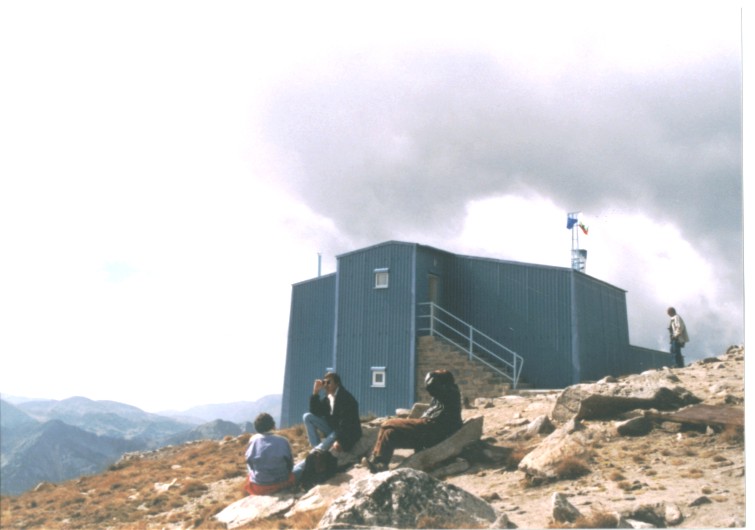
4.2. Research Prospects
BEO Moussala is an object unique for Europe.
The main ideas of BEO are:
-
observations and research of global changes and their
interactions with environment
-
development of BEO as a demonstration center for energy hi-tech
of the XXI century
-
improving of ecological culture and involving young people
in environmental sciences and mountain research.
The motto of BEO development is: "Today's Choices Determine
Tomorrow's Options". BEO Moussala current development and future prospects
are in the context of the 2002 International Year of Mountains.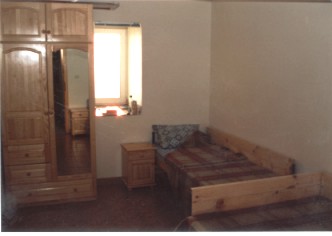
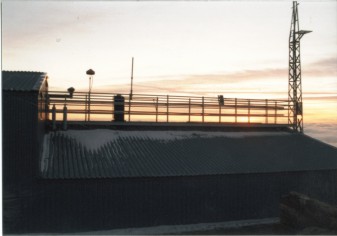
 BEO
will be equipped by unique scientific apparatuses, manufactured also by
Bulgarian firms and organizations: Cerenkov telescope for atmosphere transparency
measurement; equipment for astrophysical climate research; UV and ozone
measurements; measurements of the Earth’s magnetic field; acidity of clouds;
automatic weather station; gamma background control; low background scintillation
spectrometer; detectors for cosmic neutrons and radon apparatuses for chemical
air pollutant
BEO
will be equipped by unique scientific apparatuses, manufactured also by
Bulgarian firms and organizations: Cerenkov telescope for atmosphere transparency
measurement; equipment for astrophysical climate research; UV and ozone
measurements; measurements of the Earth’s magnetic field; acidity of clouds;
automatic weather station; gamma background control; low background scintillation
spectrometer; detectors for cosmic neutrons and radon apparatuses for chemical
air pollutant  monitoring.
monitoring.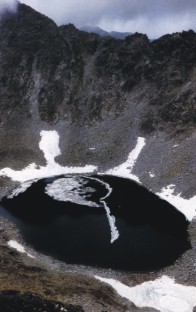



BEO basic goals and functions:
-
Complex physical, hydro- and meteorological, chemical and
biological monitoring and management of high mountain environment
-
Automatic and automated measurements of basic environmental
parameters with an Internet connection bridge via the INRNE computer network
-
Advanced technologies for energy efficient, satellite, cosmic
and astrophysical ecology information data bank and geographical information
system
-
Field work and preliminary sample processing
A laboratory of control for trans-boundary transfer of radionuclides,
heavy and toxic elements, emissions and pollutants as well as developing
of corresponding distribution models.
Role in national, regional and European ecological networks:
BEO "Moussala" is:
-
one of the highest-altitude environmental observatories in
Europe;
-
the result of the Bulgarian - French OM2 Project "Monitoring
and management of Environment in the Rila Mountain";
-
will be connected with the National system for gamma radiation
background control managed by the Bulgarian Ministry of Environment and
Water;
-
included in multidisciplinary projects of the National
Science Fund and the joint Bulgarian - Serbian project;
-
included with 2 points in GTOS implementation plan (world
system for global observing of terrestrial ecosystems);
-
an observatory of basic importance for some current projects,
project proposals and for the development of forthcoming projects:
-
· GCME: "GLOBAL CHANGE AND MOUNTAIN ENVIRONMENT IN
EUROPE. Pilot Project for Rila, Pirin and Rhodope Mountains " (submitted
to FP5 Program)
-
· IMMA Integrated Monitoring and Mountain Areas. A
Pilot Project for Bulgarian Mountains Rila and Pirin (proposed to GTOS
Program)
-
· Transcontinental Mountain Observatory Network development:
Rila and Balkans – Caucasus - Alps – Scandinavia – Himalayas – North and
South America – Antarctica
-
· Current projects with the National Science
Fund: NZ812 "Analysis of Rila Mountain Environment State" and B809 "Assessment
of High Mountain Ecosystems State in the Rila National Park Using Monitor
Species of Small Mammals".
-
· Joint Proposal with the National Agency of Sustainable
Development of the Ministry of Environment and Water for including BEO
Moussala in the National System for Radioactive Background Control and
development of BEO as a reference point for trans-border air pollution
observation.
-
· INRNE – JINR project "Atmospheric Deposition of
Heavy Metals in Rural and Urban Areas of Bulgaria
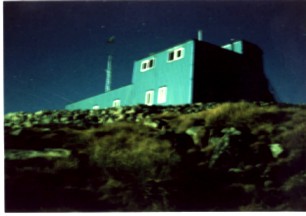 Studied
by the Moss Biomonitoring Technique Employing Nuclear and Related Analytical
Techniques and GIS Technology".
Studied
by the Moss Biomonitoring Technique Employing Nuclear and Related Analytical
Techniques and GIS Technology".
Radiological observing is one of the important tasks of
BEO Moussala [1]:
The global changes in the ecological conditions and in their
radiological parameters in particular, bring to the forth the urgent for
the present days problem of building a monitoring network on Bulgarian
territory, capable of operation in real time and submitting data for the
more important parameters characterising the condition of environment.
The Basic Environmental Observatory (BEO) "Moussala" has been designed
as a centre for performance of scientific and monitoring investigations
that could provide information not only about the Rila Mountain ecosystem
but also about the influence of distant sources – the so called remote
transfer.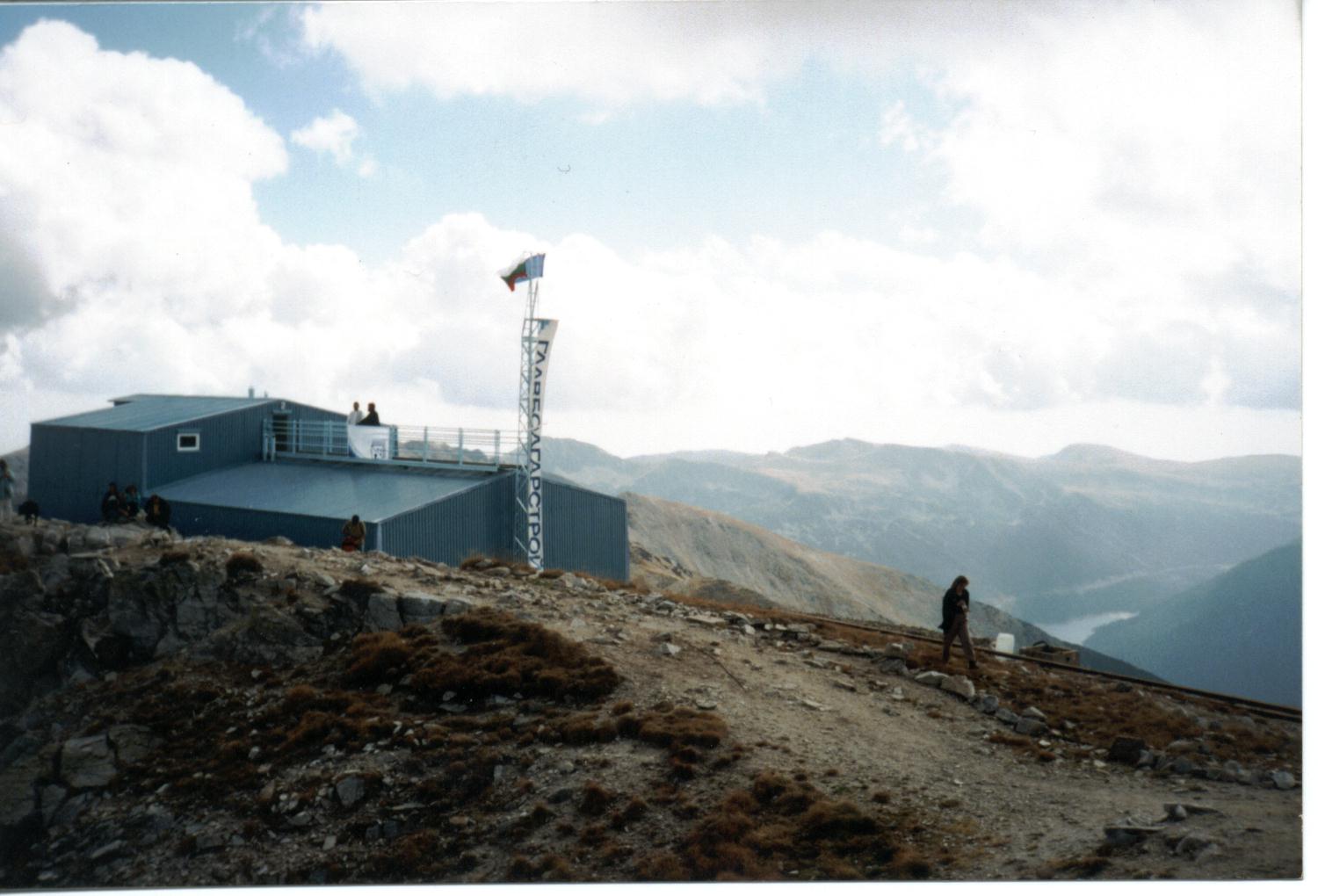
Material basis ensuring normal conditions of life and operation
of scientific and measuring devices and equipment has been constructed.
A part of this equipment related to the radiological control is functioning
and has proved its qualities. The delivery and assembly of additional instrumentation,
as well as the development of BEO as a monitoring, scientific and demonstration
centre are impending in the future.
The control on the basic parameters of the condition of environment
in real time represents a dynamically developing area of scientific and
technological research. It is of great importance for the region of the
Balkan Peninsula in the present period of basic social-economic and infrastructural
changes.
 The
specific geographical situation of the Moussala peak (altitude of 2925
m) is a significant factor for the choice of this place and its including
in the national system for ecological monitoring. The necessity and effectiveness
of the use of the observatory for recording of southern and western trans-boundary
transfer and for ecological monitoring has been irrefutably proved within
the framework of the Bulgarian-French Project OM2 (Observatoire de Montagne
de Moussala) "Monitoring and Management of the environment in the Rila
Mountain" developed in 1993-1998, the co-ordinator from the Bulgarian side
being the Institute for Nuclear Research and Nuclear Energy – Bulgarian
Academy of Sciences (INRNE – BAS).
The
specific geographical situation of the Moussala peak (altitude of 2925
m) is a significant factor for the choice of this place and its including
in the national system for ecological monitoring. The necessity and effectiveness
of the use of the observatory for recording of southern and western trans-boundary
transfer and for ecological monitoring has been irrefutably proved within
the framework of the Bulgarian-French Project OM2 (Observatoire de Montagne
de Moussala) "Monitoring and Management of the environment in the Rila
Mountain" developed in 1993-1998, the co-ordinator from the Bulgarian side
being the Institute for Nuclear Research and Nuclear Energy – Bulgarian
Academy of Sciences (INRNE – BAS).
A project has been developed for the creation of a complex
measuring station for radiological and meteorological information, situated
in the BEO "Moussala" in the Rila mountain, with the participation of the
National Centre of Environment and Sustainable Development (NCESD) of the
Ministry of Environment and Waters (MEW) and INRNE – BAS.
The aims of the project are:
To complement the national network for control of the radiation
situation in the country with one unique with its geographical position
and altitude measuring station.
To perform continuous control and early announcement in cases
of accidents in nuclear power plants, etc., in the country and abroad.
The example with the Chernobil accident showed the extreme importance of
the radiological and meteorological information about the upper layers
of the atmosphere, so that the direction of the air flows with the radioactive
pollutants carried by them, and the amount of precipitation contributing
to the disposal of the transferred pollution to the soil surface could
be followed.
To investigate the variations of the natural radiation background
of the atmosphere at a great height and to establish their relationship
with the meteorological factors: atmospheric pressure, temperature, wind
velocity and precipitation amounts.
To perform gamma-spectral analysis of the recorded radiation
gamma-background of the air in order to determine the type and amount of
radionuclides initiating it, as well as their variations in the course
of time and their correlation with the meteorological factors.
The equipment with the necessary instrumentation for the
complex monitoring of the environment is intended for the near future (the
construction and equipment of BEO is financially supported by MEW). BEO
will be included as a separate station in the "National Automated System
for Constant Control on the Gamma-background Radiation" belonging to NCESD.
This system has a hierarchical structure and at the present stage it comprises
26 local monitoring stations, 2 regional monitoring stations, a central
station, a National Centre for Emergency Activities and an Accident station.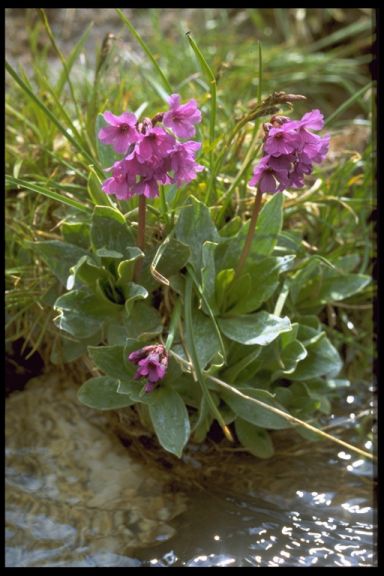
The next stage of the project with NCESD is the including
of BEO "Moussala" of INRNE – BAS in the National System for Control on
the atmospheric Air Quality.
Instrumentation has been developed for automated continuous
measurement of the radiation gamma-background till the present moment on
the basis of the submitted by EDF (the National Electric Company of France)
4 devices of the SBN 90 – SAPHYMO type for continuous gamma-measurements.
A methodology has been also developed for the adjustment and calibration
of the measuring equipment using Americium-243 and Caesium-137. An electronic
block has been developed for amplification, reception and automatic recording
of the analogue signal. Software products based on Pascal and Excel have
been developed for visualisation and processing of the accumulated data.
The measuring devices proved to have good exploitation qualities
during a long time period. The National Centre of Hydrology and Meteorology
(NCHM) and MEW were interested in the obtained data during the Kossovo
crisis. One of the devices which has been under operation in Shoumen till
now will be assembled as a part of the complex for radiological and meteorological
monitoring in the "Moussala" BEO.
Basic technical characteristics of the automatic device
for measuring the gamma-background:
-
The device is intended for continuous operation under field
conditions, observation on the natural radiation background and recording
of anomalous increase in the background.
-
Range of recording: 10 nGy/h – 100 mGy/h
-
Recording of activity: gamma 50KeV – 2MeV
-
Background noise of the detector: scintillator in 5 cm Pb
< 25nGy
-
Temperature range of operation: -30+50 0C
-
Recording at the analogue output: on a magnet carrier using
ADC (12bit) and a personal computer.
Other important direction of activity is energy efficiency
and energy hi-tech demonstration [2,3]:
BEO "Energetic" Basic Principles:
energy independence
reliability
energy efficiency
ecological conformity
compatibility with other vital BEO systems
BEO is like a spaceship and keeping of the above principles
is vital for BEO operation and its scientific program realization
BEO Basic Energy Subsystems:
-
conditioning system
-
(internal and external thermoisolation, special kind of high
mountain 3-layer windows (production of Kômerling, Germany), electric
heating, ect. aimed at maintaining the technology required and comfortable
temperature above 0°C)
-
electric power supply
-
basic (cable, 25kV)
-
reserve (35kW + )
-
parallel - the integration of renewable energy sources (especially
by use of the photo-voltage solar elements) into the stand alone system
for efficient space heating, ventilation, lighting systems and integration
of renewables into BEO building: 3-5 kW PV Solar Module
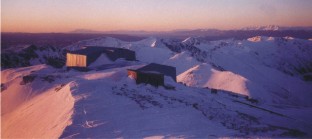 Not
at the last place is the public activity and program of BEO Moussala. A
project for development of a Visitor Center "Nuclear Technologies for Environmental
Protection" has been submitted to the Ministry of Environment and Water
and attempts are made to find other sponsors.The area of the hall envisaged
for the Visitor Center is about 24 m2. It is situated immediately to the
BEO entrance. It faces south and a magnificent view is seen through the
windows - the Pirin Mountain, the valleys of the Marichini Lakes and the
Beli Iskar River, Granchar, the Bliznatsite ridge.
Not
at the last place is the public activity and program of BEO Moussala. A
project for development of a Visitor Center "Nuclear Technologies for Environmental
Protection" has been submitted to the Ministry of Environment and Water
and attempts are made to find other sponsors.The area of the hall envisaged
for the Visitor Center is about 24 m2. It is situated immediately to the
BEO entrance. It faces south and a magnificent view is seen through the
windows - the Pirin Mountain, the valleys of the Marichini Lakes and the
Beli Iskar River, Granchar, the Bliznatsite ridge.
Main purposes and tasks
The Visitor Center of BEO - Moussala has the following purposes
and tasks:
a) Providing knowledge on the basic aspects of the global
climatic changes, the health aspects of the different types of radiation
(UV, etc.), main methods and devices of the National System for Monitoring
of Environment operating in BEO, including those using nuclear technologies,
etc.;
b) Providing knowledge on the purposes and results of the
Bulgarian - French project OM2 with accent on radiological investigations;
c) Explaining the purposes of the Protected Areas and of
the "Rila" National Park in particular, as a part of the Common European
Ecological Network;
d) Close connections with the local population and society
in this region of the Rila Mountain (Samokov, Beli Iskar, Mala Tsarkva
and others);
e) Development of scientific-popular tourism.
Benefits for the preserving of environment
- enhancing the eco-training due to the widening of the territorial
and spatial range of the National System for continuous control of the
gamma-background and of the system for environmental monitoring by including
BEO in their network;
- teaching and involving the local population in the study
of the interactions between the mountainous environment and the global
changes, as well as selecting of the possible ways of overcoming the negative
effects on nature and society;
- organizing and demonstrating effective and prospective
modern approaches, methods and initiatives aimed at improving the quality
of environment and solving the critical problems of the "Rila" National
Park.
Approaches and tools for construction
The maximal use of the multimedia resources and of the synthesized
and compact representing of information concerning the performed research
and activities for preserving the environment, as well as the radiological
monitoring and application of nuclear technologies in the ecomonitoring.
4.3. Financial support
Ministry of Environment and Water; Bulgarian - French OM2
Project: "Monitoring and Management of Mountain Environment" (MISECO -
Interministry Mission for Central and Eastern Europe - France, CNRS - National
Centre for Scientific Research of France, Ministry of Foreign Affairs of
France, EDF - Electrical Company of France, METEO - France, INRNE-BAS);
National Science Fund; Institute for Nuclear Research and Nuclear Energy;
Bulgarian Academy of Sciences.
4.4. Active members
and participants
The participants are institutes from the Bulgarian Academy
of Sciences (Institute for Nuclear Research and Nuclear Energy, Institute
of Zoology, Institute of Botany,  Institute
of Forestry), from France (National Center for Scientific Research, Environment
Institute of France, Universities of Paris, Grenoble, Besanson and Lyon),
National Environmental Research Institute (Denmark), Forschungszentrum
Karlsruhe (Germany), Centre Universiteire de Luxembourg (Luxembourg), Joint
Institute for Nuclear Research - Dubna (Russia), Ministry of Health, National
Centre of Radiobiology and Radiation Protection, National Centre of Hygiene,
Medical Ecology and Nutrition.
Institute
of Forestry), from France (National Center for Scientific Research, Environment
Institute of France, Universities of Paris, Grenoble, Besanson and Lyon),
National Environmental Research Institute (Denmark), Forschungszentrum
Karlsruhe (Germany), Centre Universiteire de Luxembourg (Luxembourg), Joint
Institute for Nuclear Research - Dubna (Russia), Ministry of Health, National
Centre of Radiobiology and Radiation Protection, National Centre of Hygiene,
Medical Ecology and Nutrition.
4.5. Publications
List of books (OM2 volumes):
-
Observatoire de montagne de Moussala OM2, Communication franco-bulgares
au seminaire Sofia-Melnik, sept.1993, edit.J.P.Carbonnel, J.N.Stamenov,
S.1993,V.1.pp.178 (1st edition), pp. 163 (2nd edition 1997),fr.,bulg.
-
Observatoire de montagne de Moussala OM2, Etat des connaissance3s
sur la montagne Rila edit. J.P.Carbonnel, J.N.Stamenov, S.1994,V.2, pp.246.fr.,
bulg.
-
Observatoire de montagne de Moussala OM2, Expedition Rila’94
edit. J.P.Carbonnel, J.N.Stamenov, S.1995,V.3, pp.262., en.,fr., summaries
in bulg., en.,fr.
-
Observatoire de montagne de Moussala OM2, Expedition Rila’95
edit. J.P.Carbonnel, J.N.Stamenov, S.1996,V.4, pp.224, en.,fr., summaries
in bulg., en.,fr.
-
Observatoire de montagne de Moussala OM2, Expedition Rila’96
edit. J.P.Carbonnel, J.N.Stamenov, S.1997,V.5, pp.142, bulg., summary in
en., fr.
-
Observatoire de montagne de Moussala OM2, Expedition Rila’96
edit. J.P.Carbonnel, J.N.Stamenov, S.1997,V.6, pp.190, en.,fr., summaries
in bulg., en.,fr.
-
Observatoire de montagne de Moussala OM2, Observation de
l’environnement de montagne en Europe, sciences de la nature, Symp. Int.
OM2, Oct.1997,Borovetz, edit. J.P.Carbonnel, J.N.Stamenov, S.1998,V.7,
pp.320, en.,fr., summaries in en.,fr.
-
Observatoire de montagne de Moussala OM2, Observation de
l’environnement de montagne en Europe, sciences de la nature, Symp. Int.
OM2, Oct.1997,Borovetz, edit. J.P.Carbonnel, J.N.Stamenov, S.1998, v.8,
pp.128, en.,fr.
1999
1. Jordan Stamenov, Boyko Vachev, The enviromental monitoring
station "Moussala OM2" - demonstration centre for new energy technologies
of the 21st century;
2. D.Klein, M.Guelev, M.Kostova, M.Hristoskova, New radon
and gamma device using TLD and SSNTD to carry out monitoring
in the environment Radiation Maesurements, Vol 31 (1999), 319-324
3. M. Voytchev, D. Klein, A. Chambaudet and G. Georgiev (1999),
"The use of silicon photodiodes for radon and radon progeny detection",
Health Physics, soumise pour publication.
4. M. Voytchev, D. Klein, A. Chambaudet, G. Georgiev and
M. lovtchev (1999), "Applications of a silicon photodiode detector for
radon progeny measurements", Radiation. Measurements, Vol. 31, pp. 355-359.
5. Tch. Lenev, M. Mitev, S. Tabakov, " Multi chanell
specter & intencity analyser of natural gamma background", 1999, Annual
Conference of Bulgarian Nuclear Society, 25-26 Nov., 1999, Kozlodui, Bulgaria;
Reports of BNC (to be printed)
6. M. Brankova, B. Vachev, M. Vitkova, M. Guelev, I. Kalapov,
I. Kirov, Tch. Lenev, A. Mishev, E. Moskv, J. Stamenov, S. Ushev, Radiological
Monitoring at Basic Environmental Observatory "Moussala", 1999, Annual
Conference of Bulgarian Nuclear Society, 25-26 Nov., 1999, Kozlodui, Bulgaria;
Reports of BNC (to be printed)
7. M. Mitev, Tch. Lenev, Chart-digital logarithmic resonance
converter, 8th National conference "Electronics'99", Sosopol, 24-25 Sept.
1999 (in press)
1998
1997
1996
1995
1994
1993
5. Summary of Major Activities
in 1999
The development of the OM2 project " Monitoring and Management
of High Mountain Ecosystems" was logically defined by: the methodology
of the first project stage and project's results, first off all by the
developed permanent interdisciplinary scientific team (in Bulgaria) and
also the international research teams in the main two directions:
-
regional character improvement in accordance with international
agreements of the Institute for Nuclear Research and Nuclear Energy (INRNE)
with the Serbian Institute for Nuclear Research and Institute of Environment
of Serbia, as well as agreements and conversations with Albania, Macedonia,
Roumania, Turkey and Greece;
-
development of common European orientation as a new project
OM2 generation in the framework of 5th EC Program or other European
and worldwide projects.
The main results are:
1. Development of two projects, financed by the National
Science Foundation
-
NZ812 "Comparative Analysis of the Environmental State of
the Rila and Shara Mountains";
-
B809 "Estimation of the State of High Mountain Ecosistems
in the Rila and Shara National Parks based on Indicator Species of Small
Mammals".
2. The construction of the Moussala Basic Ecological Laboratory,
financed by the National Environmental Protection was completed.
3. Active participation in the anniversary of BAS:
-
wide media and public relation activity for the BEO "Moussala"
opening: press conference (press agency "Balkan"), 3 TV emissions (TV1-
in "Po sveta I u nas" program and 2 cable nets), 5 radio emissions (RFI,
Darik, Tangra, Free Europe), 4 newspaper publications (Azbuki, Duma, 24
Tchasa, Echo), 2 magazine publications (Journal of Bulgarian Union of Physicists)
and a millenium calendar of INRNE;
-
development and presentation of a poster for the OM2 project.
4. Including of the OM2 Project new version IMMA (Integrated
Monitoring in Mountain Areas) in a GTOS Project (Global Terrestrial Observing
System).
5. Regular control and measurement of gamma background and
data distribution since the time of the Kosovo crisis.
6. OM2 Web Site and INRNE on-line brochoure development and
publication in the INTERNET.
7. Participation in 4 conferences:
-
Second National Conference on Renewable Energy Sources in
Bulgaria, 22-23 April, Sofia, Bulgaria;
-
Monitoring of Natural and Man-made Radionuclides and Heavy
Metal Waste in Environment, 2-5 Nov., 1999, Dubna, Russia;
-
Annual Conference of the Bulgarian Nuclear Society, 25-26
Nov., 1999, Kozlodui, Bulgaria;
-
Paneuropean Forum, Business and investment for renewable
energy, International Conference, December, 1-2 1999, Sofia, Bulgaria;
8. Construction of Moussala Basic Ecological Laboratory,
financed by the National Environmental Protection Fund and completed in
the end of September, 1999, approved and accepted by governmental authority
commission in June 2000.
9. OM2 Project poster was awarded as the best ecologycal
poster at the Annual Conference of the Bulgarian Nuclear Society - 25 NPP
"Kozlodui"
6. Owners and users
The Basic Environmental Observatory – Moussala is owned and
operated by the Institute for Nuclear Research and Nuclear Energy of the
Bulgarian Academy of Sciences, Sofia. The BEO is governed by the Astrophysical
Objects & Environment Lab. of INRNE – Sofia. The students and scientists
from BAS Institutes and Sofia and Blagoevgrad Universities are among the
BEO primary users.
The Basic Environmental Observatory – Moussala is opened
to all professionals and enthusiasts. The scientists and experts are welcome
to participate in the international research agenda of BEO "Moussala".
7. References
1. Brankova, B. Vachev, M. Vitkova, M. Guelev, I. Kalapov,
I. Kirov, Tch. Lenev, A. Mishev, E. Moskv, J. Stamenov, S. Ushev, Radiological
Monitoring at Basic Environmental Observatory "Moussala", 1999, Annual
Conference of Bulgarian Nuclear Society, 25-26 Nov., 1999, Kozlodui, Bulgaria;
Reports of BNC (to be printed)
2. Jordan Stamenov, Boyko Vachev, The enviromental monitoring
station "Moussala OM2" - demonstration centre for new energy technologies
of the 21st century, Second National Conference on Renewable energy Sources
in Bulgaria, 22-23 April, Sofia, Bulgaria;
3. J. Stamenov, P. Vitanov, B. Vachev, Solar Energy Use for
Environmental Observatory Peak Moussala, Paneuropean Forum, Business and
investment for renewable energy, International Conference, December, 1-2
1999, Sofia, Bulgaria;
8. For contacts
tel: (395 2) 7144-393
tel: (395 2) 9743761
fax: (395 2) 9753619
72, Tsarigradsko chaussee blvd.
1784, Sofia, BULGARIA
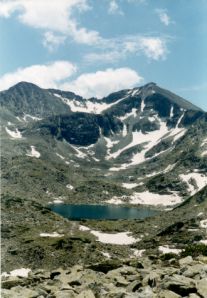






 Studied
by the Moss Biomonitoring Technique Employing Nuclear and Related Analytical
Techniques and GIS Technology".
Studied
by the Moss Biomonitoring Technique Employing Nuclear and Related Analytical
Techniques and GIS Technology".
 The
specific geographical situation of the Moussala peak (altitude of 2925
m) is a significant factor for the choice of this place and its including
in the national system for ecological monitoring. The necessity and effectiveness
of the use of the observatory for recording of southern and western trans-boundary
transfer and for ecological monitoring has been irrefutably proved within
the framework of the Bulgarian-French Project OM2 (Observatoire de Montagne
de Moussala) "Monitoring and Management of the environment in the Rila
Mountain" developed in 1993-1998, the co-ordinator from the Bulgarian side
being the Institute for Nuclear Research and Nuclear Energy – Bulgarian
Academy of Sciences (INRNE – BAS).
The
specific geographical situation of the Moussala peak (altitude of 2925
m) is a significant factor for the choice of this place and its including
in the national system for ecological monitoring. The necessity and effectiveness
of the use of the observatory for recording of southern and western trans-boundary
transfer and for ecological monitoring has been irrefutably proved within
the framework of the Bulgarian-French Project OM2 (Observatoire de Montagne
de Moussala) "Monitoring and Management of the environment in the Rila
Mountain" developed in 1993-1998, the co-ordinator from the Bulgarian side
being the Institute for Nuclear Research and Nuclear Energy – Bulgarian
Academy of Sciences (INRNE – BAS).
 Not
at the last place is the public activity and program of BEO Moussala. A
project for development of a Visitor Center "Nuclear Technologies for Environmental
Protection" has been submitted to the Ministry of Environment and Water
and attempts are made to find other sponsors.The area of the hall envisaged
for the Visitor Center is about 24 m2. It is situated immediately to the
BEO entrance. It faces south and a magnificent view is seen through the
windows - the Pirin Mountain, the valleys of the Marichini Lakes and the
Beli Iskar River, Granchar, the Bliznatsite ridge.
Not
at the last place is the public activity and program of BEO Moussala. A
project for development of a Visitor Center "Nuclear Technologies for Environmental
Protection" has been submitted to the Ministry of Environment and Water
and attempts are made to find other sponsors.The area of the hall envisaged
for the Visitor Center is about 24 m2. It is situated immediately to the
BEO entrance. It faces south and a magnificent view is seen through the
windows - the Pirin Mountain, the valleys of the Marichini Lakes and the
Beli Iskar River, Granchar, the Bliznatsite ridge. Institute
of Forestry), from France (National Center for Scientific Research, Environment
Institute of France, Universities of Paris, Grenoble, Besanson and Lyon),
National Environmental Research Institute (Denmark), Forschungszentrum
Karlsruhe (Germany), Centre Universiteire de Luxembourg (Luxembourg), Joint
Institute for Nuclear Research - Dubna (Russia), Ministry of Health, National
Centre of Radiobiology and Radiation Protection, National Centre of Hygiene,
Medical Ecology and Nutrition.
Institute
of Forestry), from France (National Center for Scientific Research, Environment
Institute of France, Universities of Paris, Grenoble, Besanson and Lyon),
National Environmental Research Institute (Denmark), Forschungszentrum
Karlsruhe (Germany), Centre Universiteire de Luxembourg (Luxembourg), Joint
Institute for Nuclear Research - Dubna (Russia), Ministry of Health, National
Centre of Radiobiology and Radiation Protection, National Centre of Hygiene,
Medical Ecology and Nutrition.